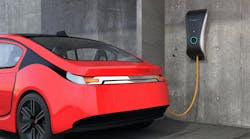It seems like all aspects of distributors’ operations are under the microscope these days. They are looking for ways to squeeze out more net profit from every line item; training their computer systems to monitor all transactions and flag pre-set variances from plans; automating their warehouses for efficiency and picking accuracy; and building online storefronts to conform to customers’ buying preferences.
This drive to operate more profitably and professionally seems to cover every square inch of every branch. One area of operations not getting quite as much scrutiny right now is delivery. And that’s interesting because local product delivery is one of the most important value-added services a distributor offers. A dependable, on-time driver with a smile and a clean truck does as much to market a distributor’s services as any slick marketing program.
In addition to the ubiquitous box truck, the delivery function has taken many different forms in this industry over the years. Warren Electric Supply had a heliport on the roof of its downtown Houston headquarters and would deliver products to offshore oil rigs in the Gulf of Mexico. Kennedy Electrical Supply’s Jerry Eichwald once told me that in his company’s earliest years, they crushed the roof racks of an old station wagon by carrying too much conduit around the streets of the Big Apple. The folks at Manhattan’s G&G Electric occasionally make deliveries via subway. And who hasn’t helped out a customer by having an office employee drive a few products that didn’t make the order ticket to a job-site in the back seat of his or her car.
Some new delivery options available via mobile apps may be pulling up to your loading dock. With their current capabilities, I don’t see the current generation of package couriers with names like Roadie (www.roadie.com); On My Way (an Amazon pilot program); and Zipments (www.zipments.com) ever replacing a distributor’s fleet of box trucks. But for emergency deliveries of smaller products when all delivery trucks are out on the road, they may already make sense. And who knows if some Millennial is developing a more robust mobile-based delivery business right now in his or her dorm room that will feature B2B delivery necessities like liability insurance or bar-coded package tracking?
At least one of the new app-based delivery companies offers a pretty clever feature. Roadie recently teamed up with Waffle House to utilize its 1,750 restaurants as meeting points for senders to meet up with drivers who happen to be heading in the direction the package needs to go. According to a CNBC report, Waffle House is offering a free waffle to anyone who downloads Roadie’s app, and a free beverage to drivers who stop by before making a delivery.
Even the U.S. Postal Service is looking at local package delivery for enhanced revenues. With first-class mail, for years its biggest money maker, shrinking by 61% from 1995 to 2013, Megan Brennan, the new USPS postmaster general, is experimenting with different delivery options, including delivering groceries for Amazon Fresh.
The Postal Service already has new revenue streams in place in the form of partnerships with FedEx and UPS to deliver packages locally. According to an article posted as www.forbes.com, “Of the four billion packages delivered by the Postal Service last year, 470 million of them came from FedEx and UPS. In an unusual arrangement Brennan calls ‘coopetition,’ the Postal Service delivers these parcels ‘the last mile’ to their destination and FedEx and UPS transport Postal Service products on their planes.”
She believes that even though technology decimated the Postal Service’s first-class mail volume, e-commerce may offer it new ways to utilize its vast local delivery network. And the post office is now accepting proposals from auto manufacturers to replace 160,000 of its standard delivery vehicles with a larger, more fuel-efficient Next Generation Delivery Vehicle (NGDV) that would have additional racking for its parcel delivery business.
These new delivery options may be the start of a revolution in local delivery. If nothing else, they may give you a good reason to rethink the delivery piece of your service equation — or at least get you a free waffle from the good folks at Waffle House.











